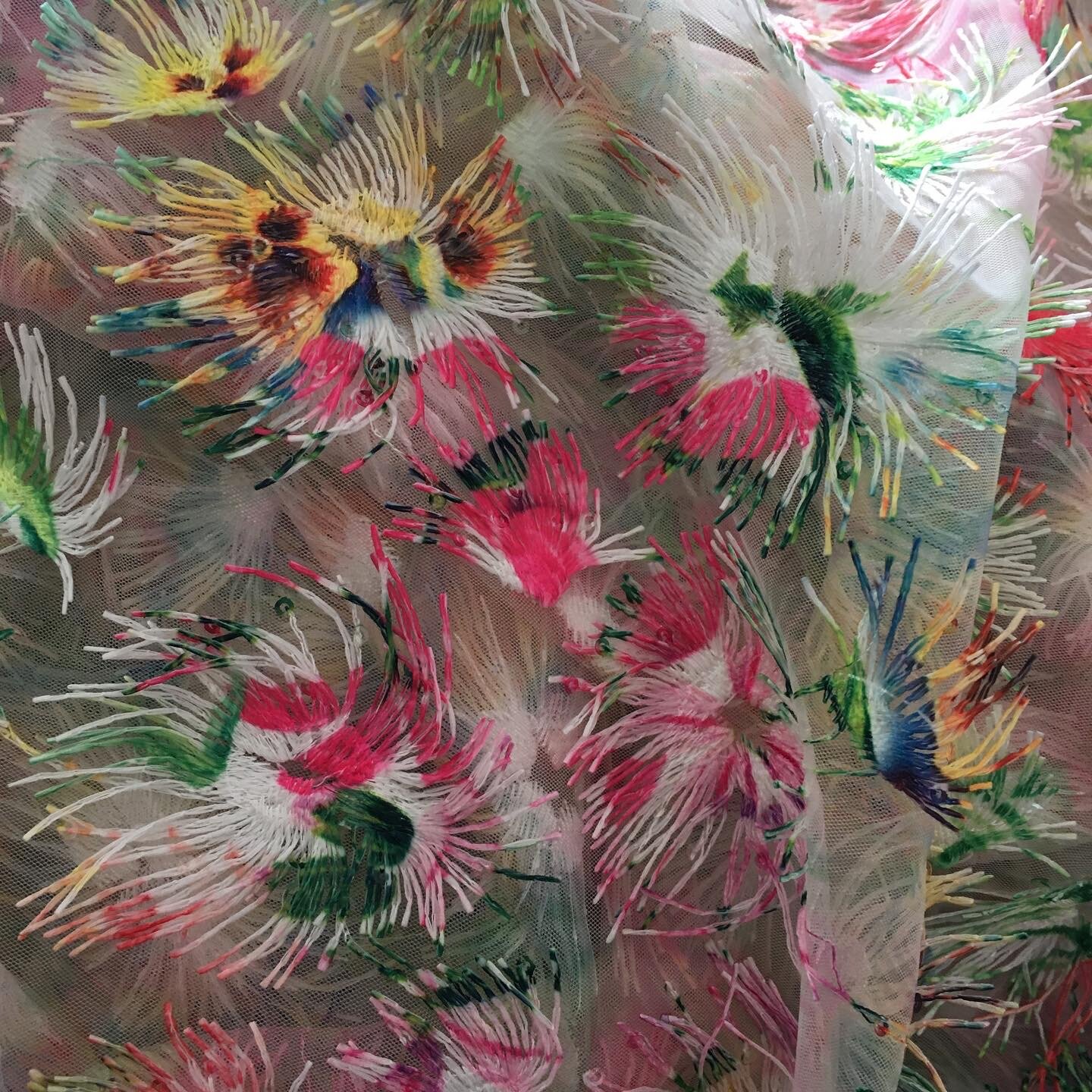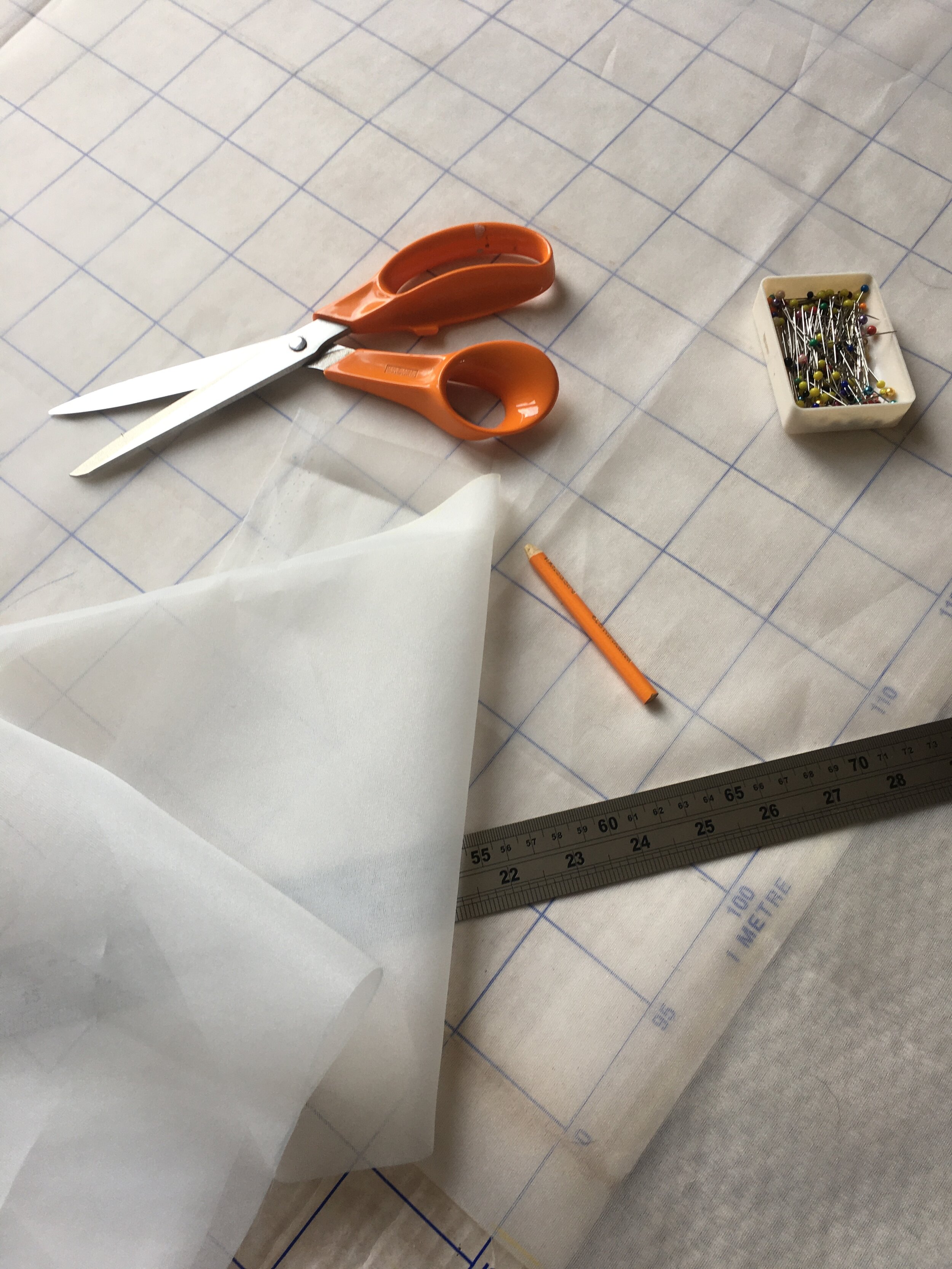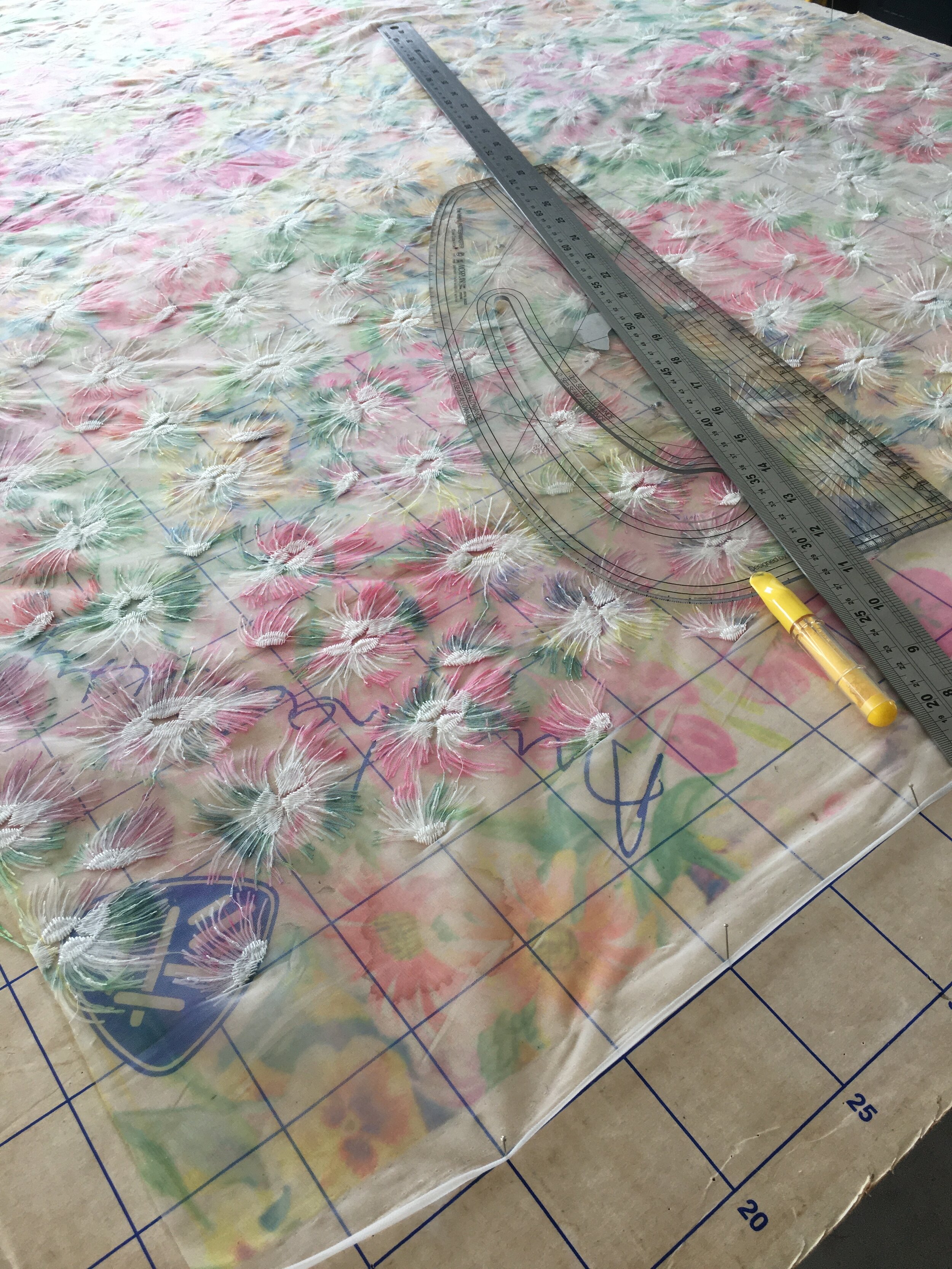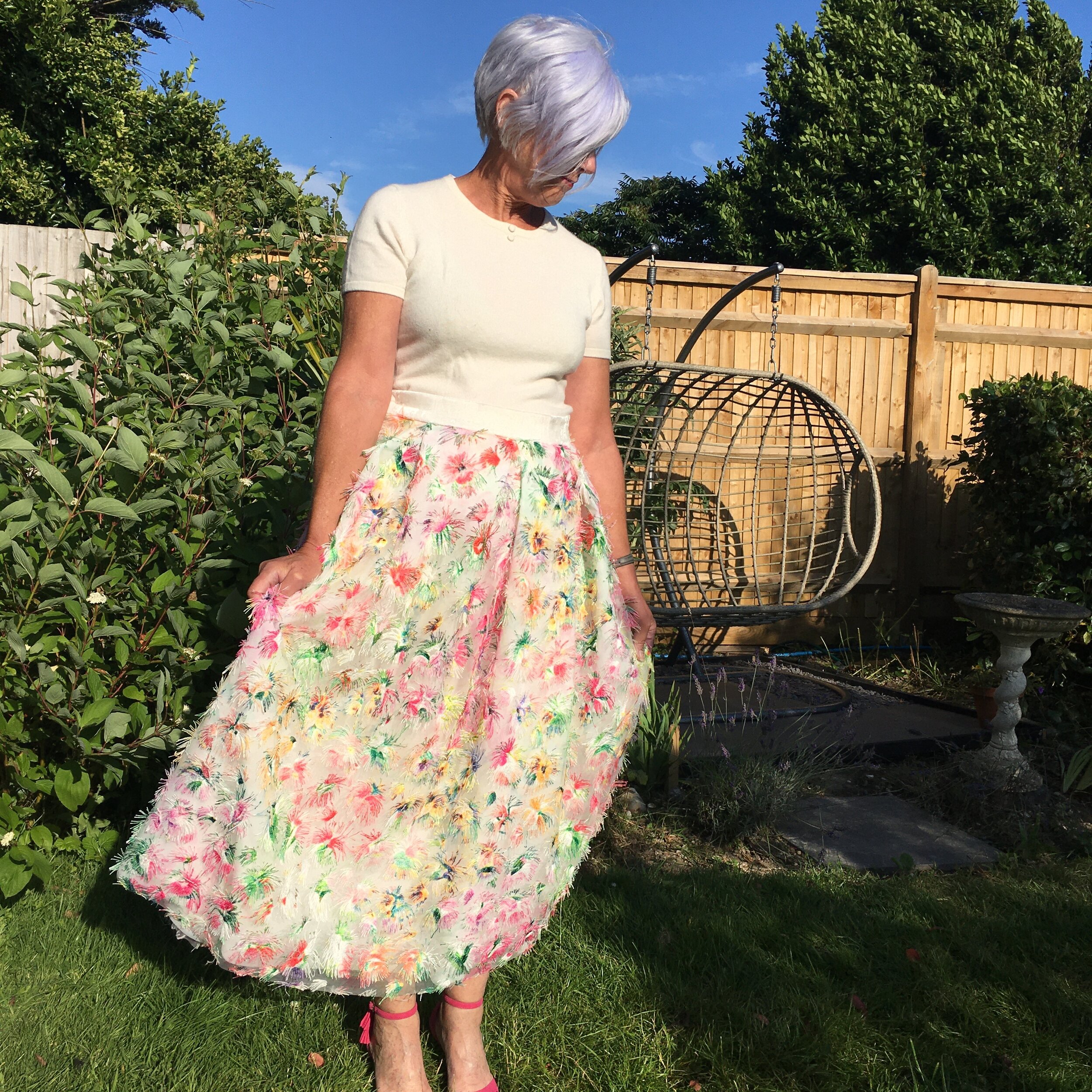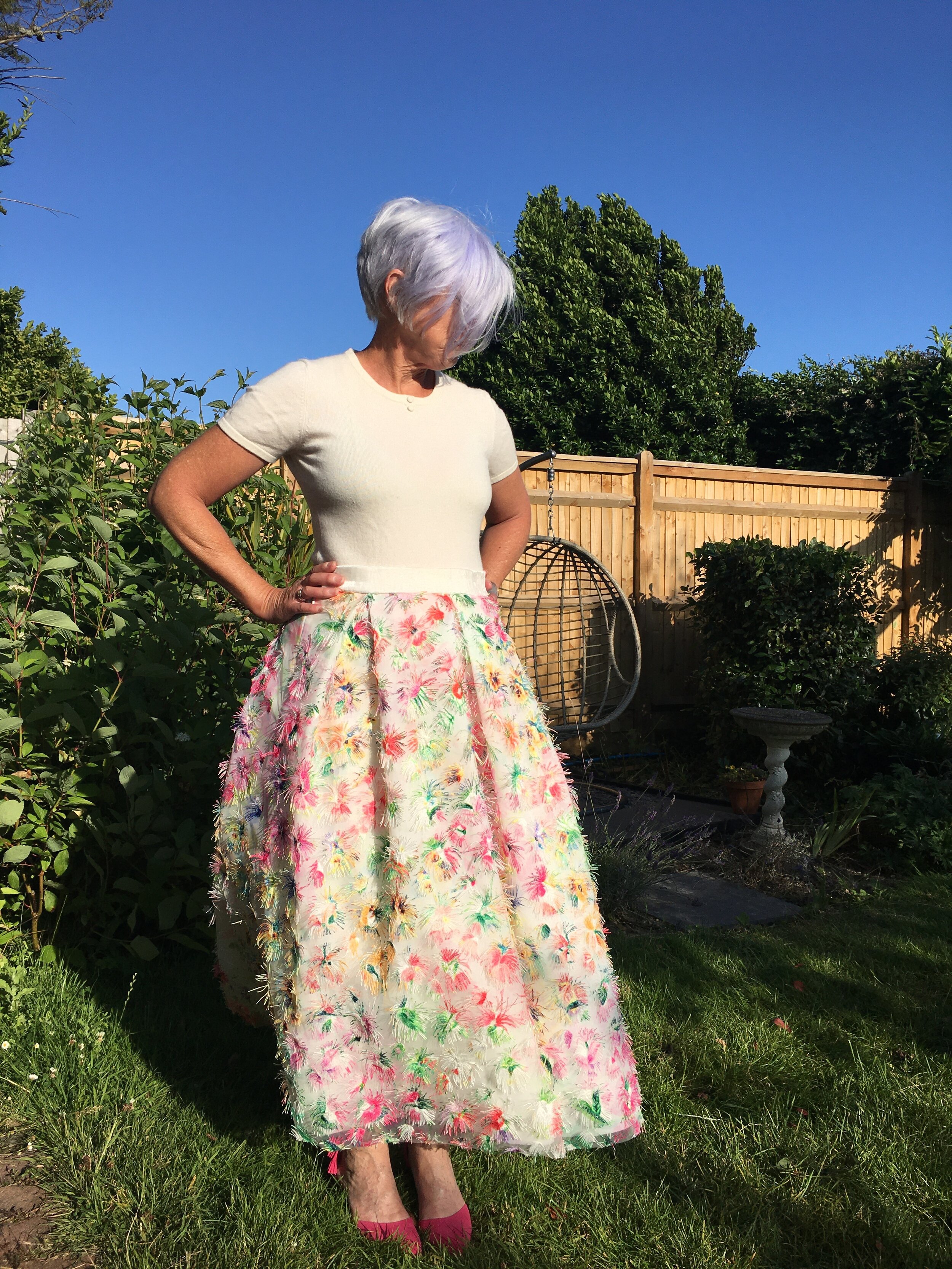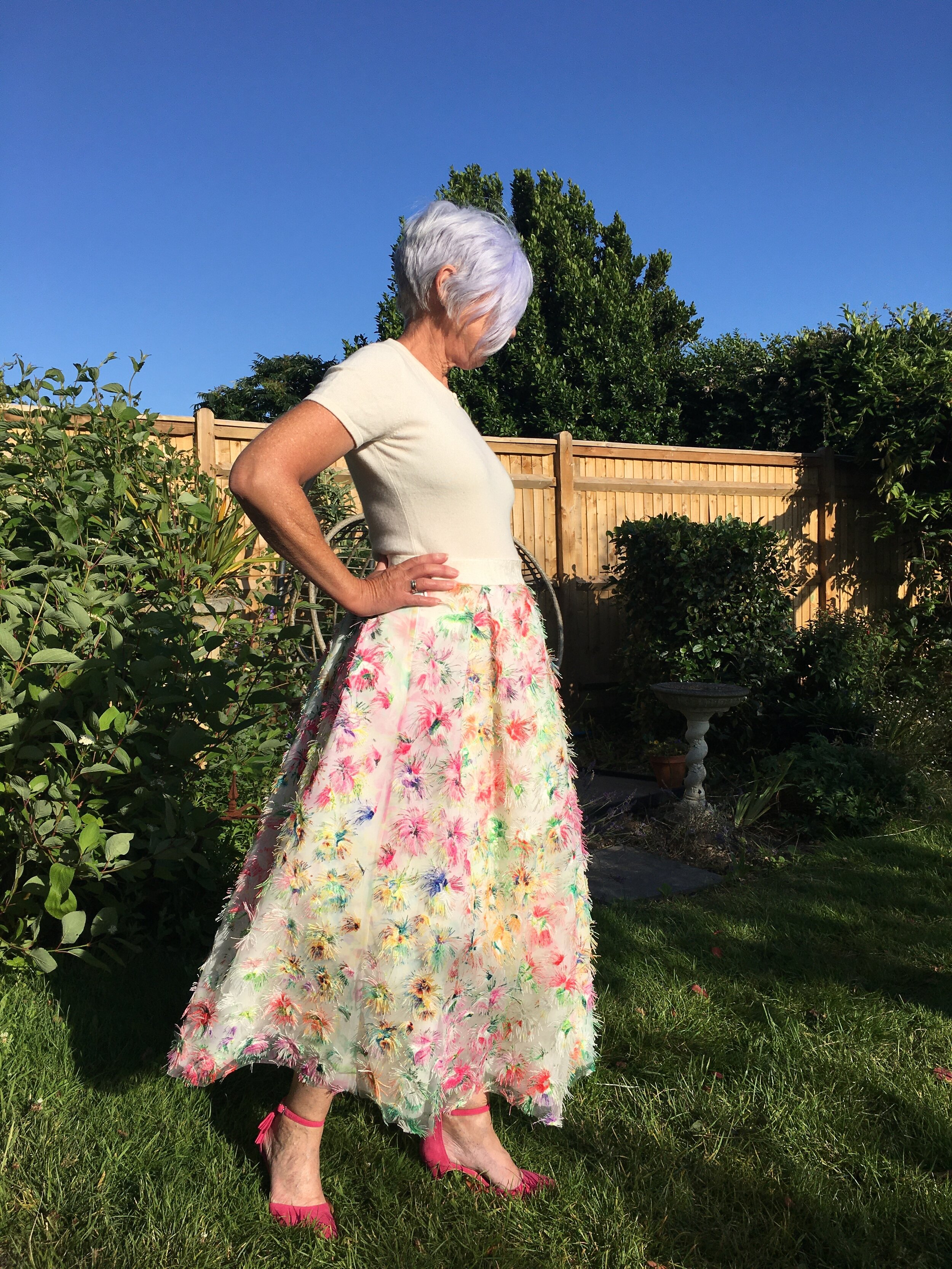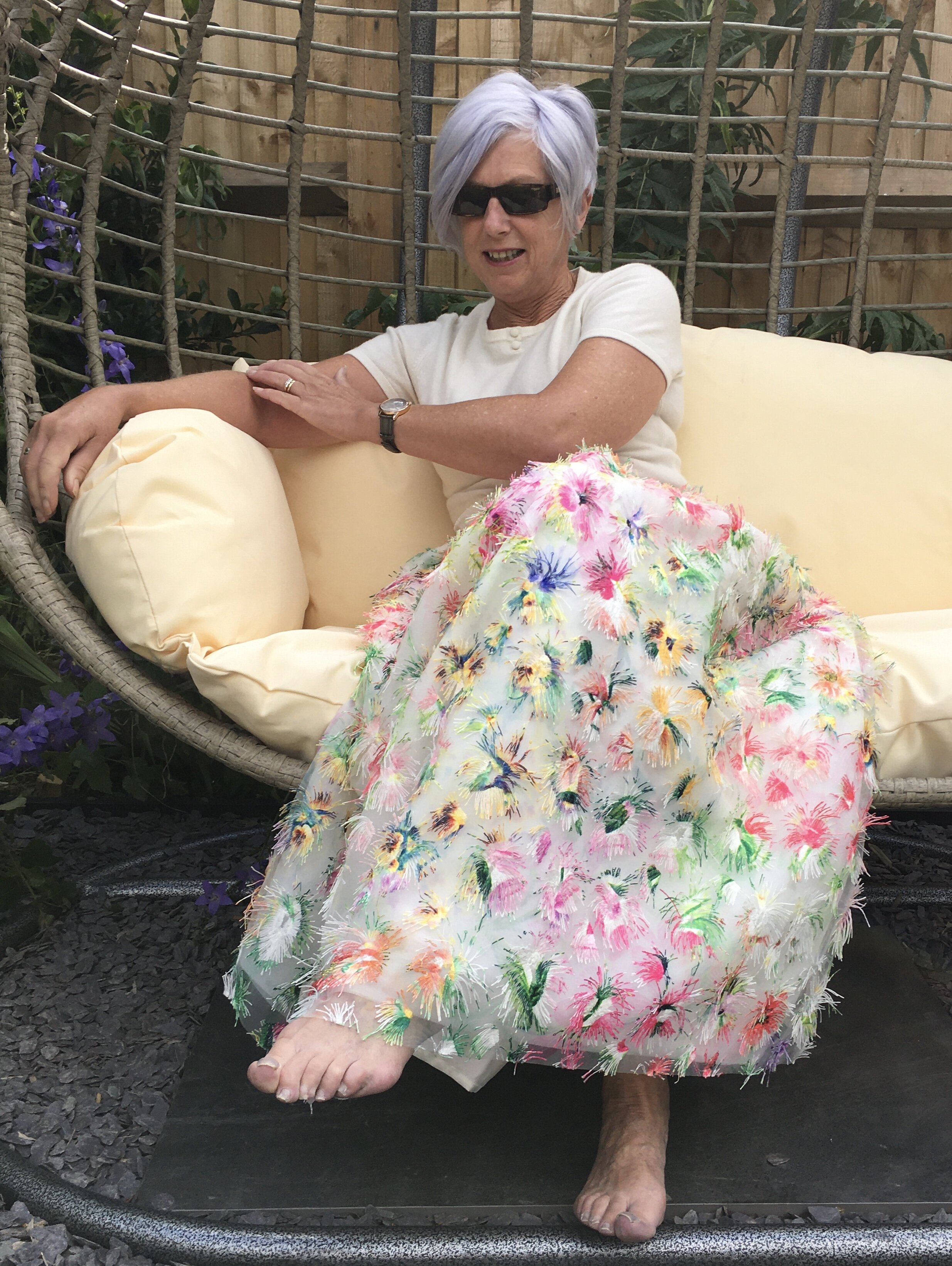Just Dreamy - Embroidered Tulle Skirt
Embroidered tulle skirt made by Donna Gilbert, using fabrics from Minerva
I love, love, love this skirt! It’s totally different from anything I normally wear – far more feminine – but every time I look at it, it just makes me feel joyful!
This beautiful embroidered tulle comes from Minerva and unfortunately is no longer available, though there are lots of other fancy tulles on their site. I spotted it on Instagram and fell in love with it – it was one of those fabrics you had to buy even with no project in mind. I bought 2 metres, thinking that I would probably make a loose fitting robe, or jacket at some point. I certainly never envisaged a skirt.
Colourful embroidered tulle fabric from Minerva
I’ve always loved the romance of a tulle skirt. In July 2021 a #sewrecreatethelook challenge started on Instagram, encouraging sewists to make a garment inspired by designers or the high street. I wanted a project which would make an impact but be reasonably quick to accomplish. I got sent down a tulle skirt rabbit hole via Pinterest and other Instagrammers and knew immediately that this was what my embroidered tulle was destined for. I was also inspired by the femininity of Christian Dior’s New Look. Dior designed flower-women, with full skirts flaring like flower petals. I was particularly inspired by his beautiful May gown, which was part of the Tulipe line in 1953. That particular dress is adorned with embroidery by Rébé which is designed to suggest sprays of field flowers; every time I looked at my tulle I was reminded of his beautiful dress.
I wanted to try and find a method of recreating the shape of Dior’s corolla-style flared skirt without using masses of net and underpinnings. Minerva kindly offered me a Tease Gazar organza bridal fabric which was described as offering ‘a bit of stiffness whilst still remaining silky smooth to the touch.’ This 100% polyester was also described as lightweight and was nice and wide at 148cm – it sounded ideal for what I was after and I opted for two layers for to try and add the required volume.
With three layers, plus a lining, I needed to reduce bulk at the waistline so I opted for large inverted pleats rather than the more traditional gathering commonly used on tulle skirts. There are three double inverted pleats to the front and three at the back. I used the width of the fabric to produce the front section and the back section, so there are seams at the sides. To work out the pleat size and the amount of fabric required, I found a really useful article via Threads magazine: https://www.threadsmagazine.com/2015/10/15/pleat-to-measure
This calculation meant cutting large rectangles of fabric, with 90 degree angles, which was not as easy as it sounds on such a lightweight fabric. Here are a few tips:
Work on the largest surface possible, ideally one you can walk all the way round.
I’d be lost without my old, shabby cardboard cutting board. I used the grid lines to pin the fabric through to hold in place and try to ensure straight cut lines.
Use plenty of measuring tools. My aluminium metre rule proved really useful as it’s sturdy enough not to slip around and it holds the fabric in place.
I marked the cutting lines with a Clover chalk marker - it was just visible on the tulle.
My trusty Pattern Master tool ensured a 90 degree angle at the beginning and end of each line.
TAKE YOUR TIME! Cutting accurately is fundamental to a good finish on this type of skirt. It took a good day to measure and cut the tulle and stiffened organza for the underskirts but it paid off in the long term.
Once the panels were cut, I individually French-seamed all layers along one side seam leaving an opening for a 9” zip. An invisible zip was inserted into the side seam of the uppermost layer of the organza. Once the zip was in place I tacked the three layers together along the waist seam. I cut a cardboard spacer to accurately measure the size of the pleats and marked each set with coloured pins, starting from CF and CB and working outwards to each side seam. Once the pleats were accurately marked they could be folded in place and tacked again – removing the original tacking before stitching the pleats in place with a fairly large machine stitch and stopping some distance from the remaining side seam so that each layer could be French-seamed before attaching to the waistband.
I had planned to use a simple A-line lining using a viscose satin but eventually I decided to pleat this as well; I wanted to leave enough fullness to add a net petticoat underneath if required. The lining was made in the same manner and once again, tacked to the waist of the skirt.
For the waistband I used a remnant of ivory silk velvet; this added a nice textural quality and a luxe sheen but it was slippery to work with. I interfaced it, attached it right sides together, and then flipped it over and stitched in the ditch to secure it. The waistband is fastened with a hook and eye. The tulle and lining were both hand-stitched in place around the zip to secure.
I was worried that the embroidered element of the tulle would catch in the seams, but it was fairly easy to ease out, and/or trim as necessary. The tulle layer did not require hemming, I simply neatened it with a rotary cutter. The satin viscose lining is narrow-hemmed and the Tease Gazar will require hemming as it frays a little. This has not been done yet as I have not decided whether or not to add some horsehair braid to one or both layers of the organza for additional volume.
For a skirt which looks so simple, this actually took a lot of experimentation! There are probably easier ways to produce a similar effect but I enjoyed the process and have ended up with a beautiful, unique skirt which achieves its objective – it looks divine and is a real joy to swan around in! It’s definitely my ‘happy skirt’ – just need a special event to wear it to now!!
Details:
Embroidered tulle - 2m – Minerva
Teaze Gazar organza bridal fabric – 4m – Minerva https://www.minerva.com/mp/1015064/tease-gazar-organza-fabric-ivory
Ivory silk velvet for waistband (I used a remnant which I already had)
Viscose satin lining – 2m – William Gee https://www.williamgee.co.uk/product-category/linings-and-interlinings/linings/viscose-satin/
9” invisible concealed zip – William Gee
Thread – Gutermann sew-all polyester sewing thread – shade 111
16mm horsehair braid – 4m (which I may or may not use)


